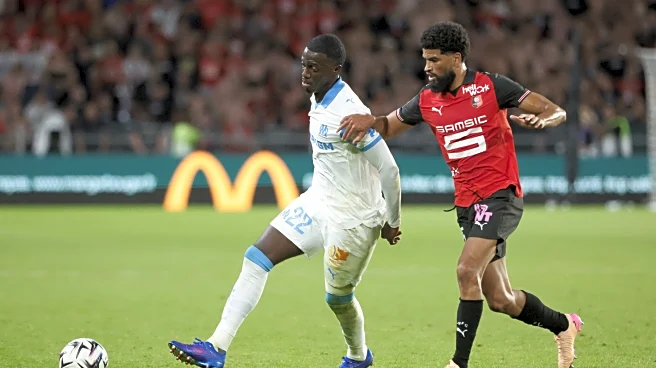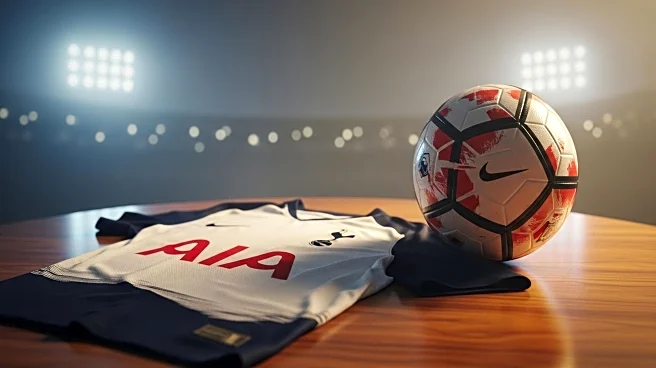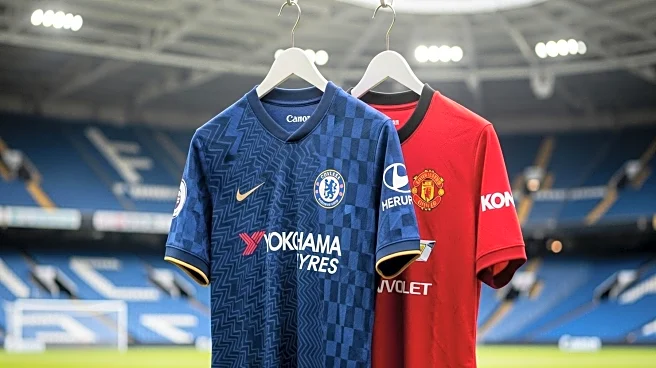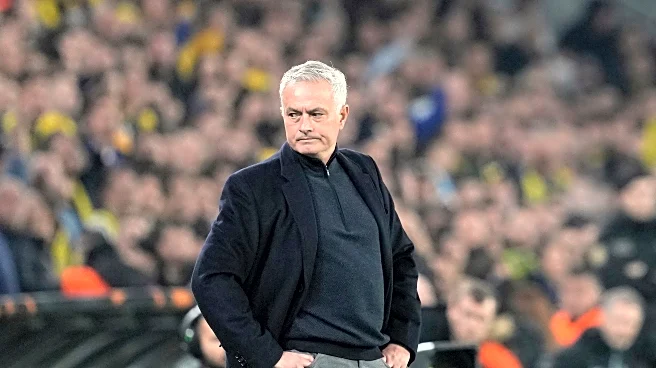What's Happening?
Manchester United forward Rasmus Hojlund is on the verge of completing a loan move to Serie A club Napoli. The 22-year-old Danish international is set to travel to Italy for a medical examination with the reigning Italian champions. The agreement between Manchester United and Napoli includes a potential permanent transfer valued at £38 million, contingent upon certain conditions, such as Napoli qualifying for the next season's Champions League. Despite Hojlund's previous desire to stay at Manchester United, he has been excluded from all four competitive matches this season, following a lackluster performance where he scored only four league goals in the 2024-25 season.
Why It's Important?
The potential transfer of Rasmus Hojlund to Napoli highlights the strategic decisions clubs make regarding player performance and team composition. For Manchester United, offloading Hojlund could free up resources and space for new talent, while Napoli stands to gain a promising player who could bolster their attacking options. This move could impact both clubs' standings in their respective leagues and influence their strategies for upcoming seasons. The transfer also underscores the competitive nature of European football, where player movements can significantly alter team dynamics and league outcomes.
What's Next?
If the transfer is finalized, Rasmus Hojlund will join Napoli and potentially contribute to their campaign in Serie A and the Champions League. Manchester United may seek to fill the void left by Hojlund with new signings or promote existing players to more prominent roles. Napoli's qualification for the Champions League will be a critical factor in making the transfer permanent, adding pressure on the team to perform well in the league. Both clubs will likely monitor Hojlund's performance closely to assess the success of the transfer.
Beyond the Headlines
The transfer of Rasmus Hojlund could have broader implications for player management and contract negotiations in football. It highlights the importance of performance metrics in determining player value and the strategic use of loan agreements to manage financial risks. Additionally, it may influence other clubs to reconsider their approach to player development and retention, especially when dealing with underperforming athletes.













